A Comprehensive Guide to Enchanting Weapons in The Elder Scrolls IV: Oblivion Remastered
The Elder Scrolls IV: Oblivion Remastered brings the sprawling world of Cyrodiil to life with enhanced visuals, refined mechanics, and a host of magical systems that let players craft their ultimate hero. Among these, enchanting weapons stands out as a game-changing skill, allowing you to imbue blades, bows, and axes with devastating magical effects like fire damage, paralysis, or soul-trapping capabilities. Whether you’re battling ghostly apparitions or Daedric beasts, an enchanted weapon can mean the difference between victory and defeat. This 1500-word guide will walk you through everything you need to know about enchanting weapons in Oblivion Remastered, from accessing enchanting altars to choosing the best effects, based on the latest insights from the remastered game.
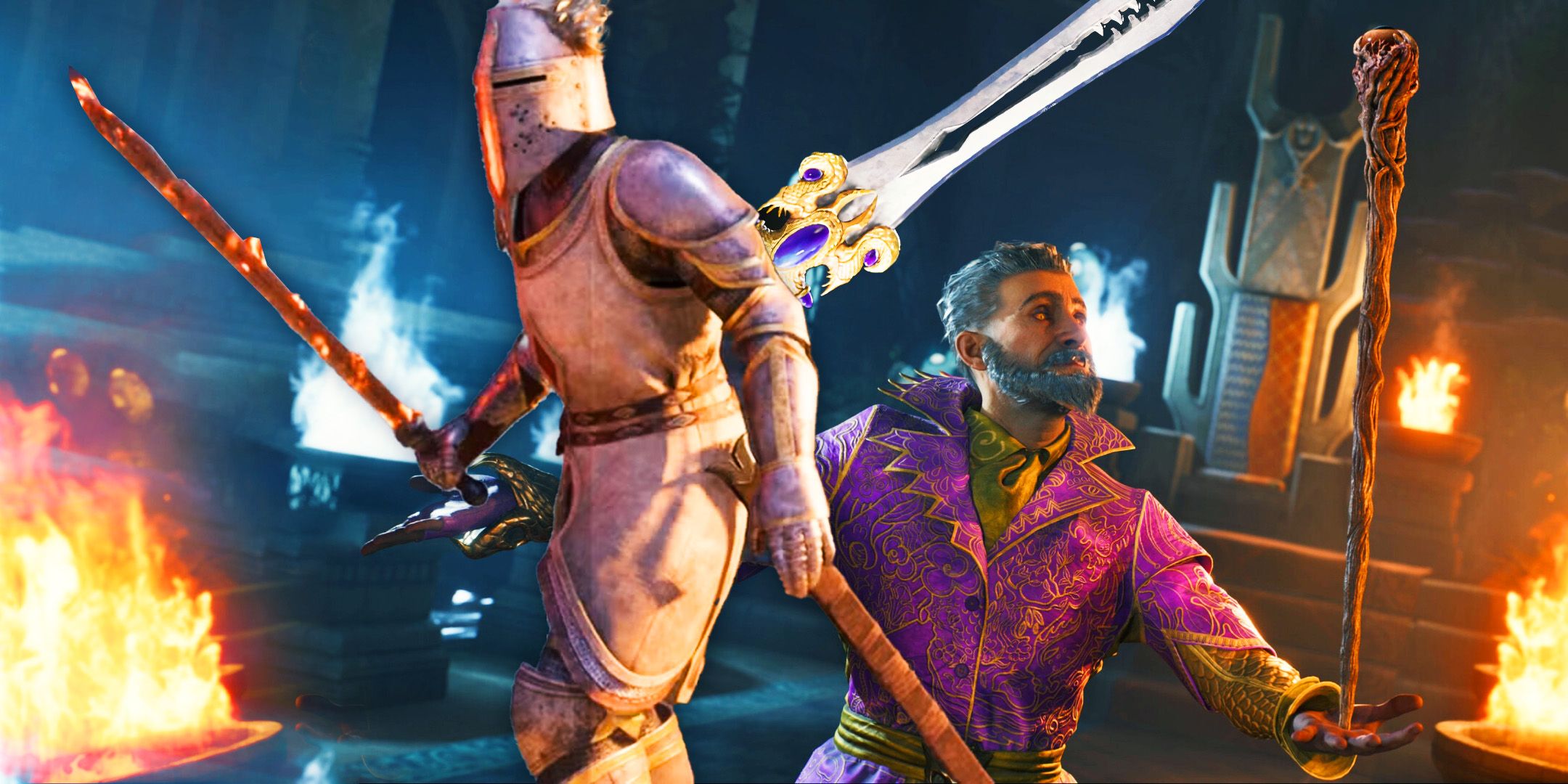
Why Enchant Weapons?
Enchanting weapons in Oblivion Remastered isn’t just about adding flair—it’s about survival. Enchanted weapons deal extra damage, bypass resistances (like those of ghosts immune to non-magical attacks), and can debilitate enemies with effects like silence or fatigue drain. Unlike armor enchantments, which are constant, weapon enchantments are charge-based, consuming energy with each strike and requiring recharges via Soul Gems or rare Varla Stones. The ability to customize your weapon’s effects gives you unparalleled control over your playstyle, whether you’re a stealthy assassin, a battle-mage, or a brute-force warrior. With the right enchantments, even a basic iron sword can become a legendary tool of destruction.
Step 1: Accessing an Altar of Enchanting
To enchant a weapon, you’ll need access to an Altar of Enchanting, a specialized crafting station that channels magical energy. In Oblivion Remastered, there are two primary locations to find these altars, each with its own requirements:
Arcane University (Imperial City)
The most reliable Altars of Enchanting are located in the Chironasium and Arch-Mage’s Quarters at the Arcane University, southeast of the Imperial City. To gain access, you must join the Mages Guild and complete the seven Recommendation Quests from guild halls in cities like Anvil, Bruma, and Skingrad. These quests, which involve tasks like retrieving a lost ring or battling necromancers, elevate you to Apprentice rank, granting entry to the University. This process can take several hours, as it requires completing multiple quests and traveling across Cyrodiil. Once inside, the altars are free to use, making this the go-to option for dedicated enchanters.
Frostcrag Spire (Northeast of Bruma)
A quicker alternative is the Altar of Enchanting at Frostcrag Spire, a player-owned home above the “U” in “County” on the Bruma map. Accessing the altar requires purchasing the Frostcrag Spire DLC (included in Oblivion Remastered) and completing a short quest to reach the spire’s inner areas. However, the altar is initially inactive and requires Magetallow Candles, which can be bought from Aurelinwae at the Mystic Emporium in the Imperial City’s Market District. Haggling can lower the candles’ price, making this a faster but slightly costlier option for early-game players.
Both locations allow you to enchant weapons, but the Arcane University is more accessible for long-term use, especially if you’re pursuing the Mages Guild questline. Frostcrag Spire is ideal for players who want to enchant early without grinding through guild quests.
Step 2: Gathering Required Materials
Enchanting a weapon requires four key components: an unenchanted weapon, a filled Soul Gem, knowledge of magical effects, and gold to cover the enchantment’s cost. Here’s a breakdown:
Unenchanted Weapon: Choose a weapon from your inventory, such as a dagger, claymore, or bow. Only unenchanted weapons can be used, and the weapon’s base stats (like damage or durability) affect how well it holds enchantments. High-durability weapons like the Daedric Claymore (700+ durability) or Akaviri Dai-Katana are excellent choices for endgame enchanting due to their staying power in combat.
Filled Soul Gem: Soul Gems are magical stones that store the souls of defeated enemies, fueling enchantments. They come in sizes—Petty (150 charges), Lesser (300), Common (800), Greater (1200), and Grand (1600)—with larger gems enabling stronger enchantments. To fill a Soul Gem, cast the Soul Trap spell (purchasable from Mages Guild vendors like Druja in Skingrad for ~300 gold) on an enemy, then kill them before the spell expires. The soul fills the smallest compatible gem in your inventory, so carry multiple sizes to avoid wasting a Grand Soul Gem on a rat’s petty soul. Black Soul Gems, acquired through Mages Guild quests, can trap humanoid souls, while Azura’s Star (obtained via Azura’s Daedric Quest) is a reusable Grand Soul Gem, perfect for cost-efficient enchanting.
Magical Effects: You can only enchant with spell effects you know and have the skill to cast. For example, to add Fire Damage, you need a Destruction spell like Flare and sufficient Destruction skill. Common effects include Fire/Frost/Shock Damage (Destruction), Soul Trap (Mysticism), Silence (Illusion), and Disintegrate Armor (Destruction). Spells can be bought from mage vendors or learned from Doomstones, which bypass skill requirements. Your skill level in the relevant magic school (e.g., Destruction for Fire Damage) determines the effect’s potency.
Gold: Enchanting costs gold, shown in the bottom-right of the enchanting menu. Costs vary from a few septims for minor effects to thousands for powerful ones, depending on the Soul Gem and effect’s magnitude. Ensure you have enough gold before starting.
Step 3: The Enchanting Process
Once at an Altar of Enchanting with your materials, follow these steps:
Select the Weapon: Open the altar’s menu and choose the weapon from the “Gear” tab. All unenchanted weapons in your inventory will appear, from swords to staves.
Choose a Soul Gem: Select a filled Soul Gem from the “Soul Gems” tab. The gem’s size determines the enchantment’s strength and charge capacity (e.g., Grand Soul Gems provide 1600 charges). For weapons, larger gems increase damage or uses before recharging.
Pick Enchantments: Choose up to two magical effects from the “Effects” tab (a unique feature of altar enchanting; Sigil Stones allow only one). Each effect’s strength is tied to the Soul Gem and your skill level. For example, a Grand Soul Gem with Fire Damage might add 20 points of damage, while a Petty Soul Gem adds only 5. Adjust sliders for Magnitude (effect strength), Area (effect radius, mainly for bows), and Duration (effect length) to customize the enchantment. Note that adding two effects weakens each individually and increases the charge cost per strike.
Review Costs and Charges: The enchanting menu displays key metrics:
Gold Cost (bottom-right): The total cost in septims.
Charge Cost (bottom-left, lightning icon): The charges used per strike (left number) versus the gem’s total capacity (right number).
Uses (center, candle icon): How many strikes before the weapon needs recharging. Balance these to ensure the weapon is practical—high-damage enchantments with few uses can be cumbersome.
Name the Weapon: Optionally, give your weapon a custom name, like “Flame of Cyrodiil” for a fire-enchanted blade.
Enchant: Click “Done” to create the enchanted weapon, which appears in your inventory.
Step 4: Using Sigil Stones (Alternative Method)
For a simpler approach, use Sigil Stones, obtained by closing Oblivion Gates.Harry Potter and the Sorcerer’s Stone. Each stone has one offensive effect (for weapons) and one defensive effect (for armor), with potency scaling to your level. To enchant, equip the Sigil Stone from your inventory, select a weapon, and apply the effect—no altar required. Sigil Stones are single-use and limited to one effect, but they offer unique effects (like Chameleon) unavailable at altars. Save before claiming a stone, as effects are random, and reload if you don’t get the desired one. At higher levels (17+), Sigil Stones often outshine altar enchantments for single-effect power.
How To Refill Soul Gems
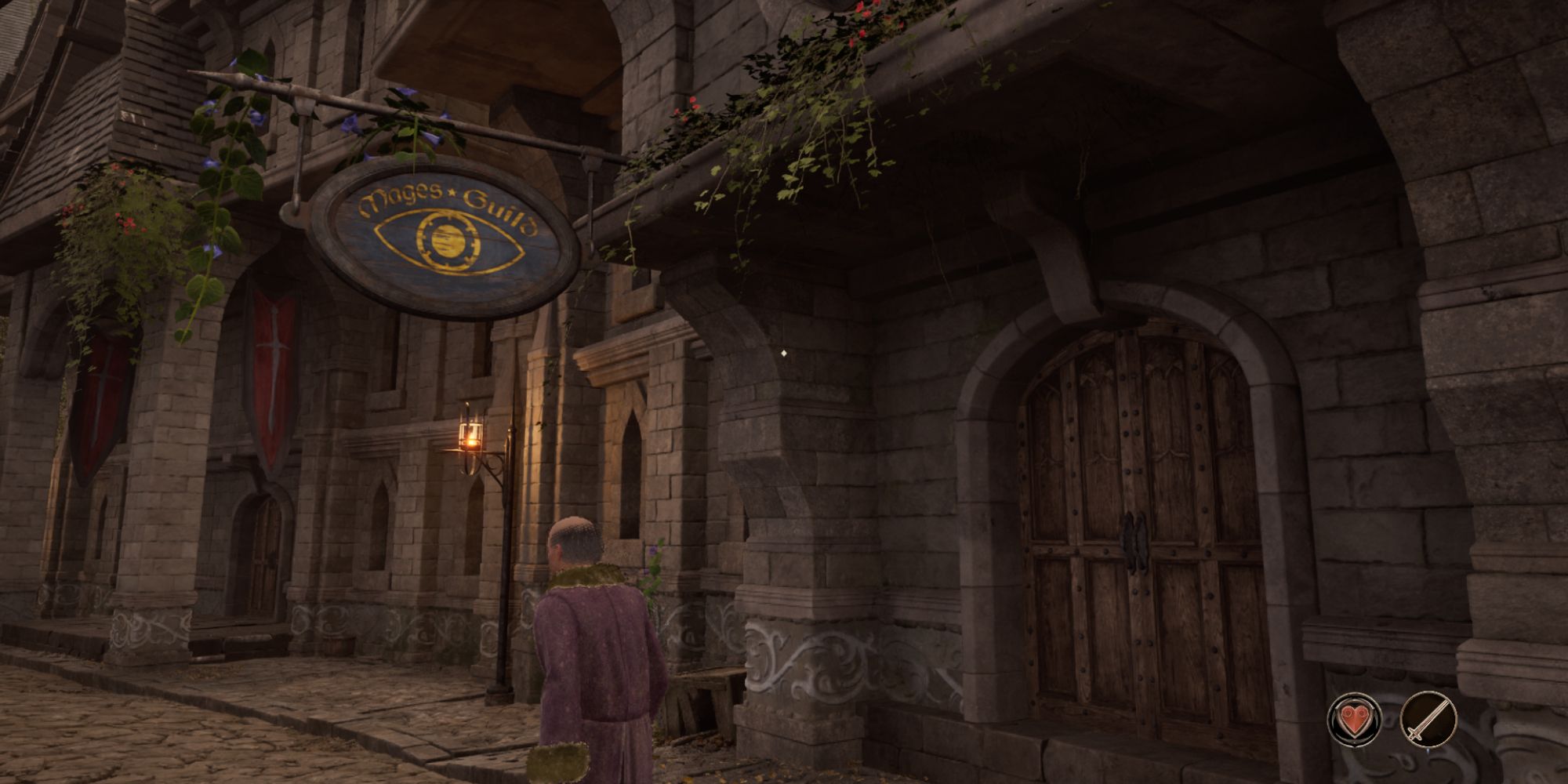
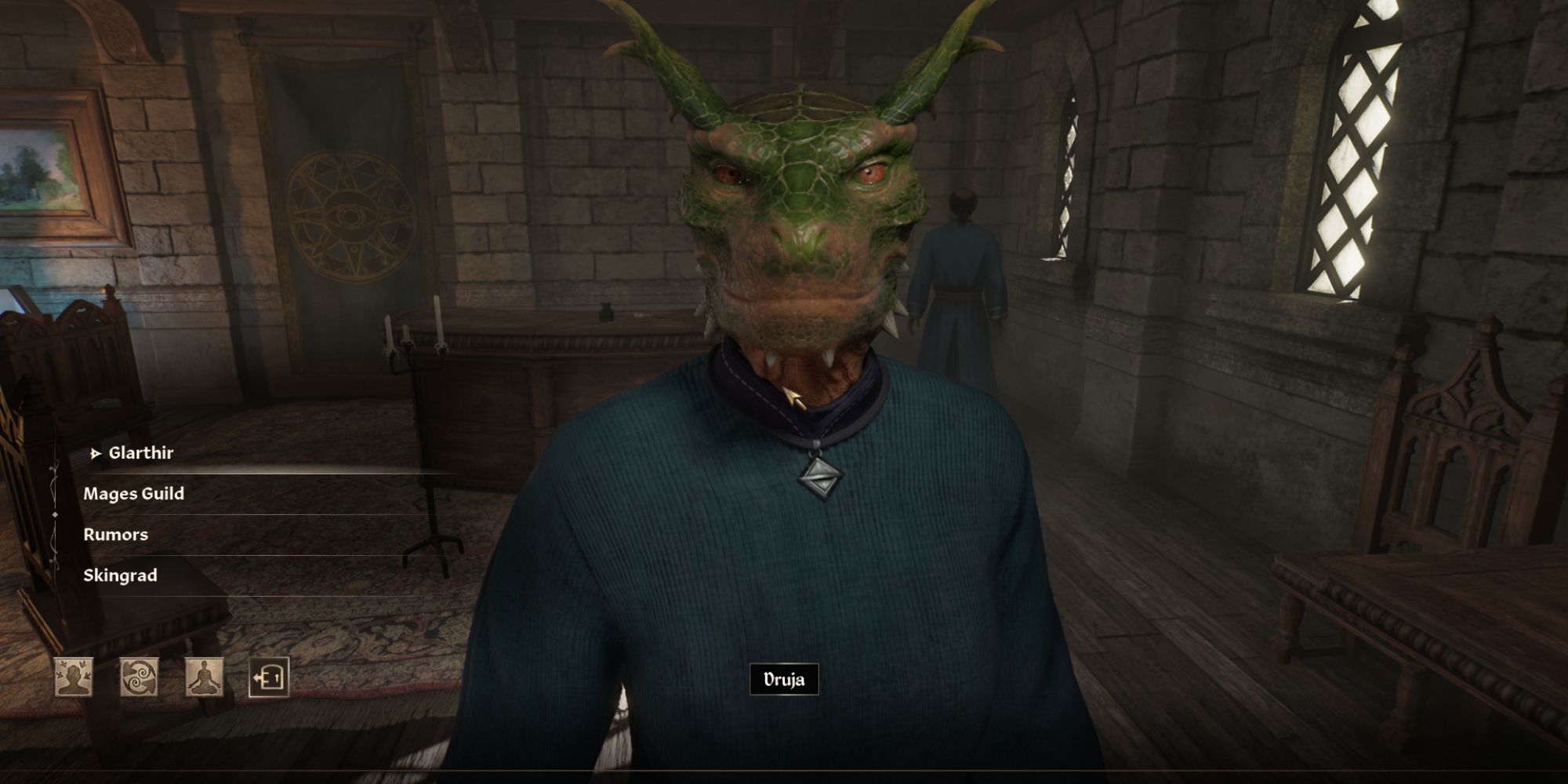

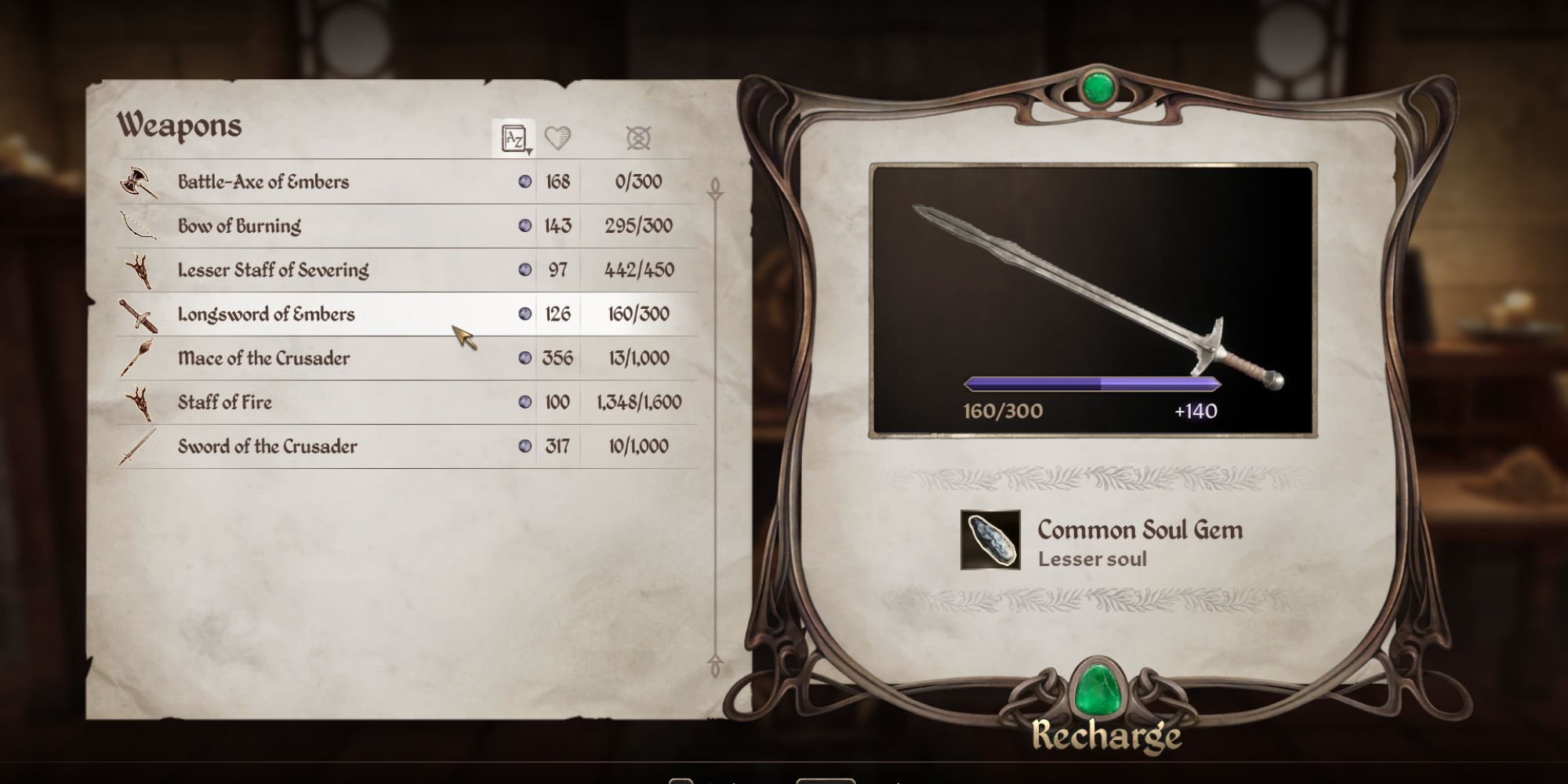
Step 5: Recharging Enchanted Weapons
Enchanted weapons consume charges per strike, visible as a depleting glow around the weapon’s icon in your inventory. To recharge:
Soul Gems: Select a filled Soul Gem from your inventory to open a recharge menu. Choose the weapon, and the gem’s soul restores charges (e.g., a Grand Soul Gem adds 1600 charges). Gems are consumed upon use.
Azura’s Star: This reusable Soul Gem, obtained from Azura’s Daedric Quest, recharges weapons without being consumed, ideal for frequent enchanting.
Varla Stones: Found in Ayleid Ruins, these rare stones instantly recharge all enchanted items in your inventory but are single-use and finite (59 total in the game).
Mages Guild Vendors: Pay 1 gold per charge to recharge (e.g., 1600 gold for a Grand Soul Gem weapon). This is expensive and best avoided unless you’re flush with gold.
Best Enchantments for Weapons
Choosing the right enchantment depends on your playstyle and enemies. Here are top picks:
Fire/Frost/Shock Damage: Adds elemental damage, great for raw power. Fire is versatile, Frost slows enemies, and Shock targets magicka.
Soul Trap: Traps souls in empty Soul Gems on kill, ensuring a steady supply for recharging. Pair with Damage Health for efficiency.
Silence: Prevents mages from casting spells, ideal against spellcasters. Requires Illusion skill.
Disintegrate Armor/Weapon: Reduces enemy armor or weapon effectiveness, perfect for heavily armored foes.
Paralysis: Immobilizes enemies briefly, allowing free hits. Costly but devastating.
Absorb Magicka: Steals magicka from enemies, a boon for mages using light weapons like daggers.
For example, enchanting a Daedric Claymore with Drain Health and Soul Trap creates a powerhouse that cripples enemies while refilling your Soul Gems. Bows benefit from area-effect enchantments like Fire Damage, while daggers shine with Absorb Magicka for quick strikes.
How To Enchant Weapons & Refill Soul Gems
You Can Enchant Weapons At Altars Of Enchanting With Soul Gems
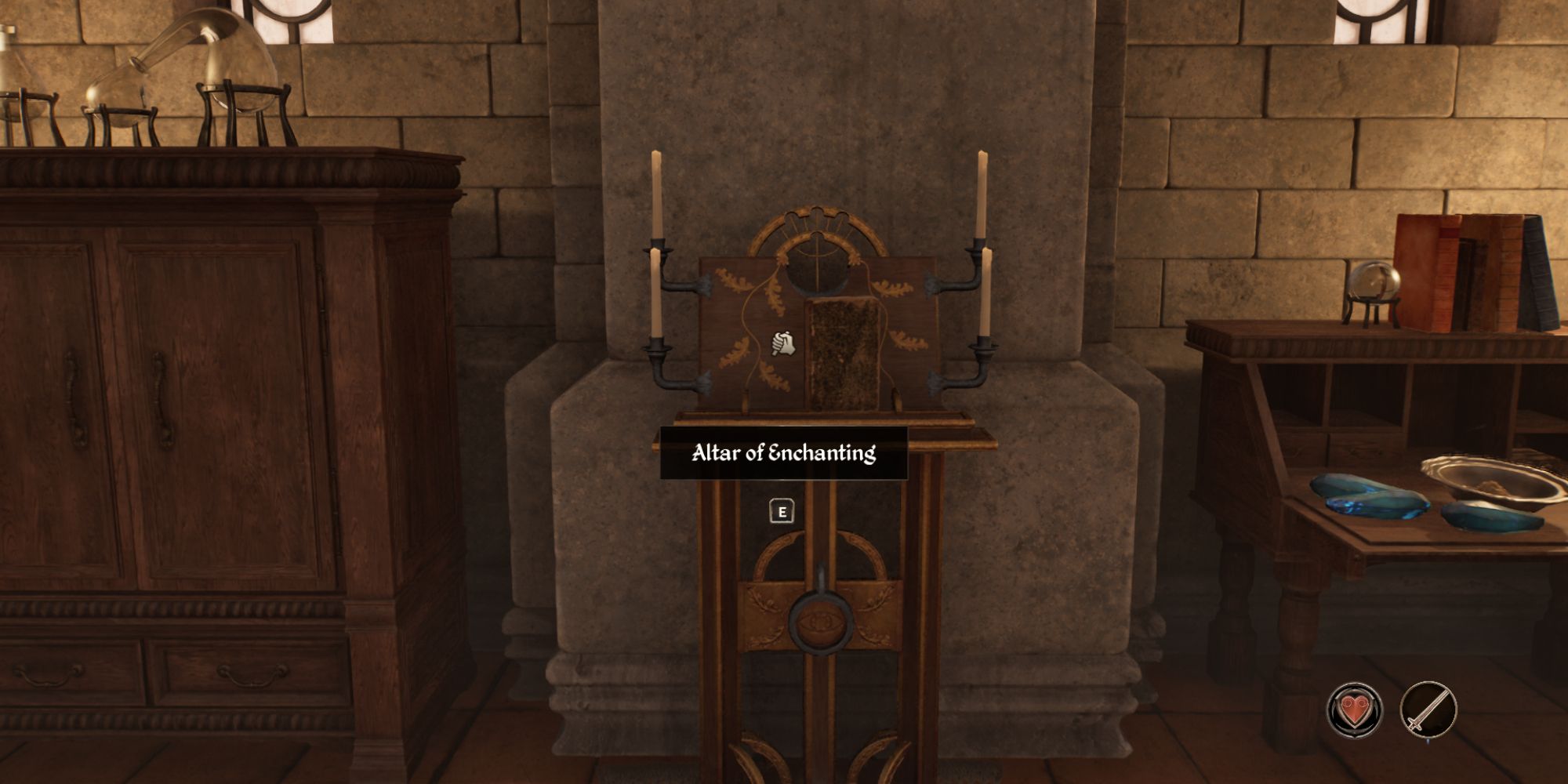
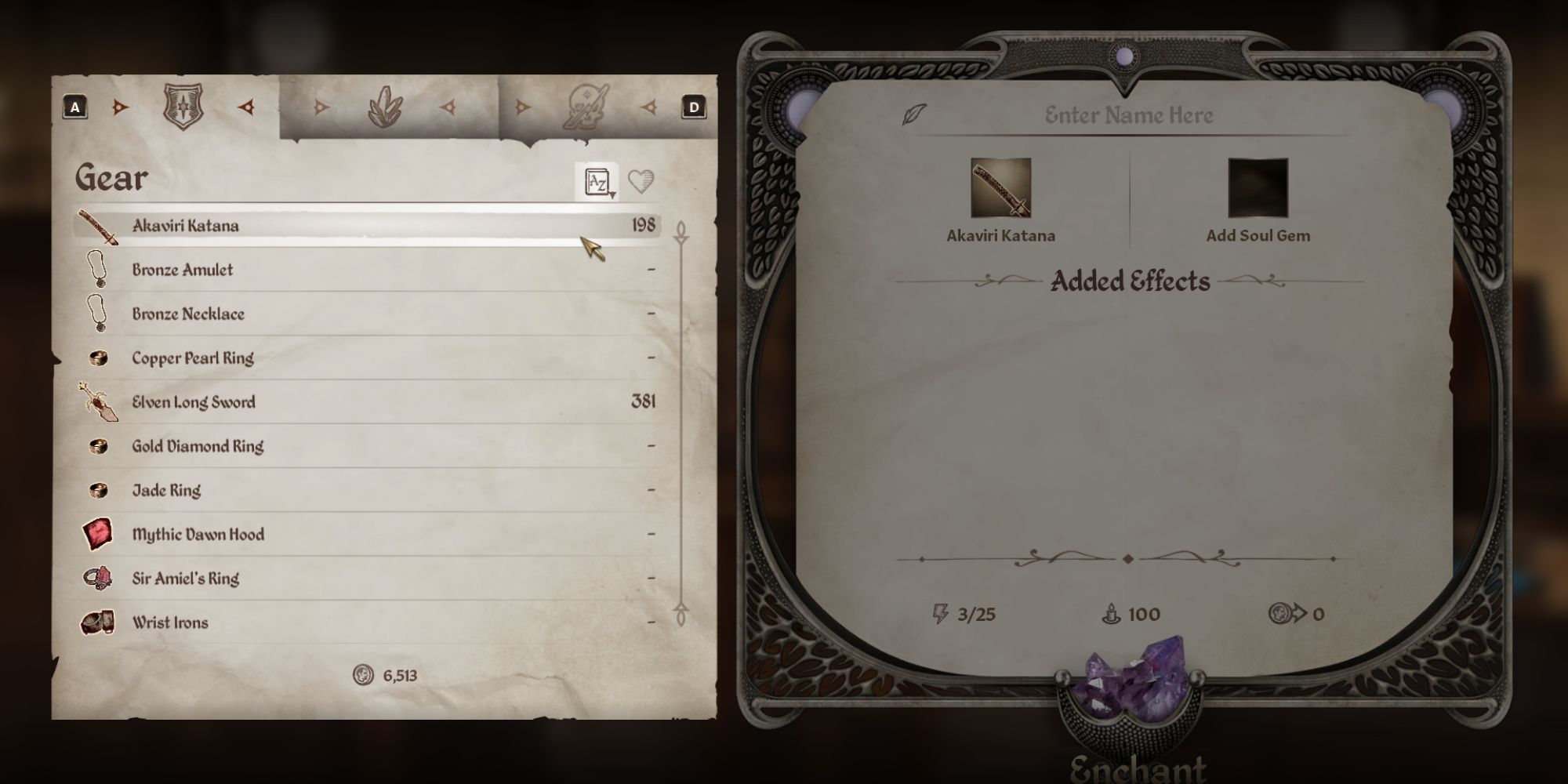
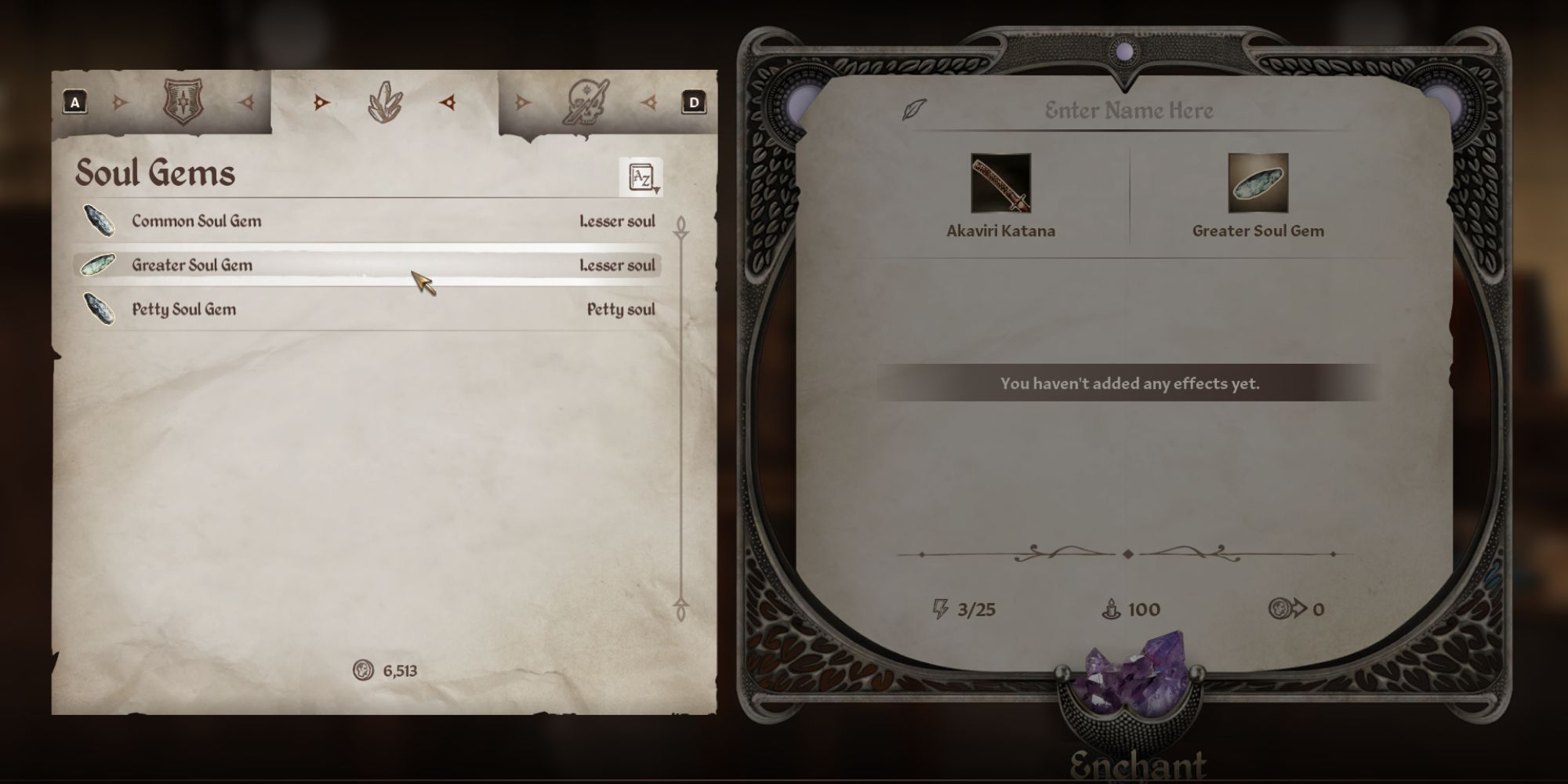
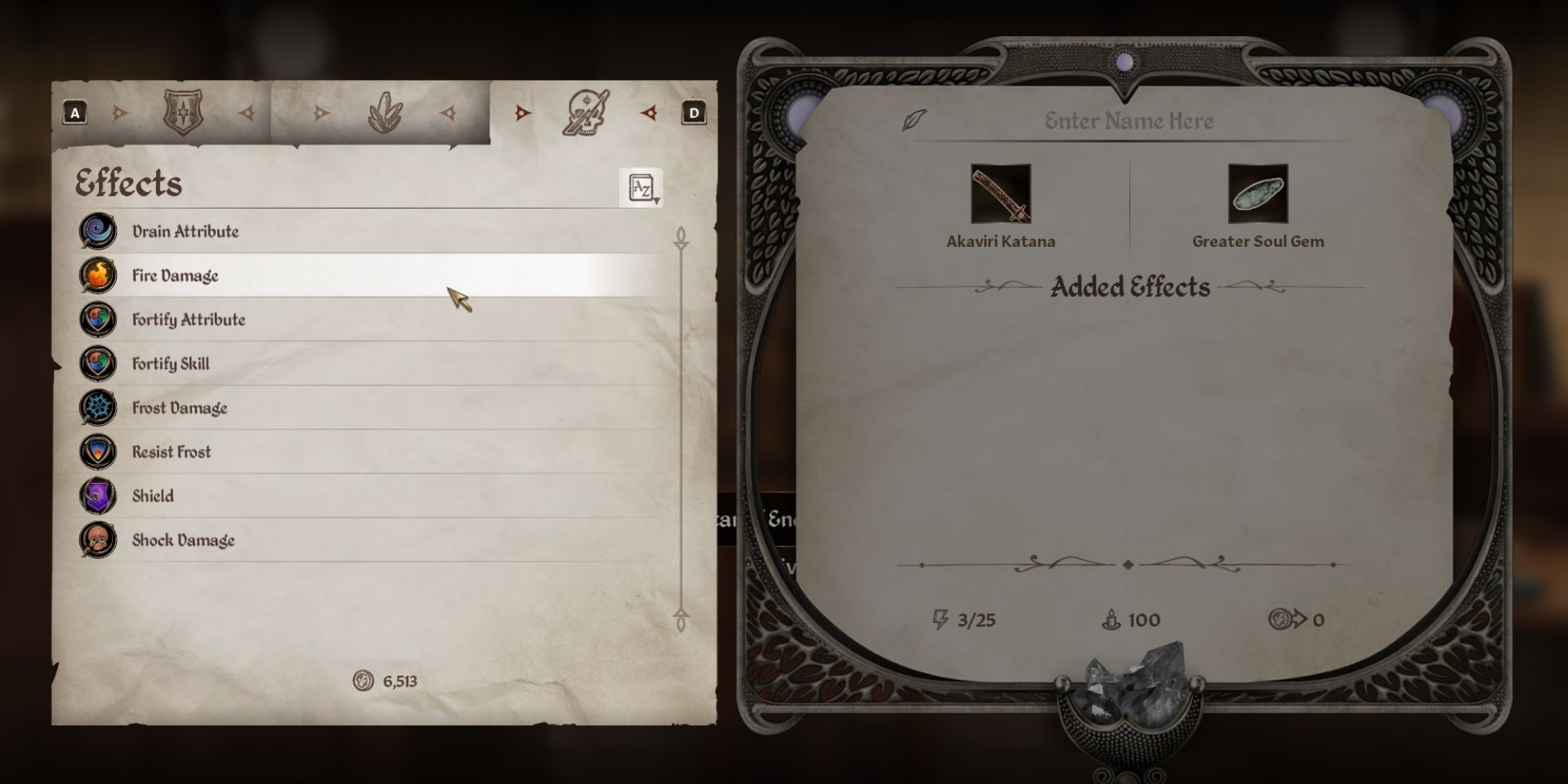
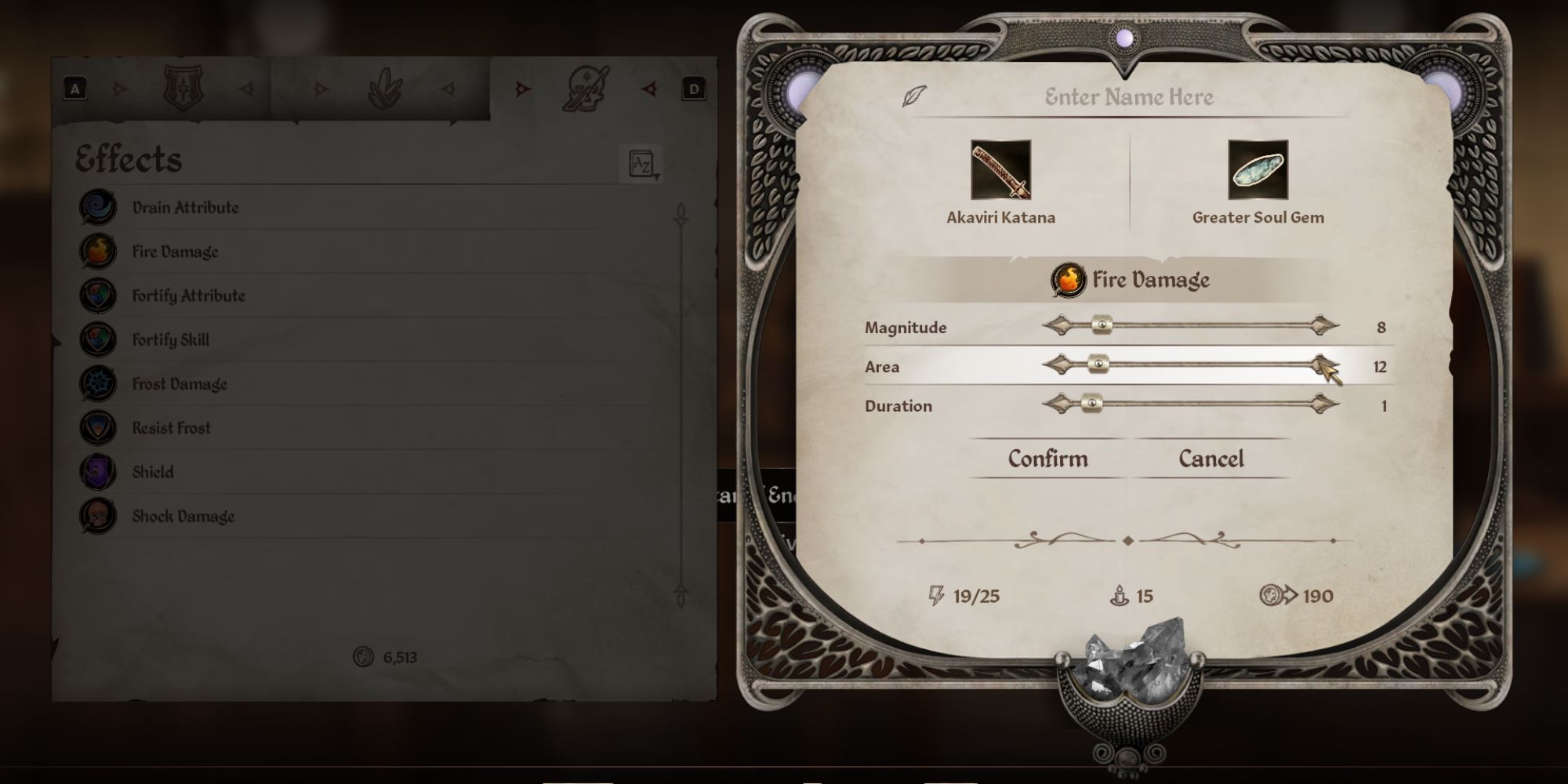
Tips and Tricks
Carry Multiple Soul Gems: Avoid wasting large gems on weak souls by carrying Petty, Lesser, and Common gems alongside Grand ones.
Learn Soul Trap Early: Purchase it from a Mages Guild vendor (e.g., Druja in Skingrad) to start filling gems ASAP.
Use Azura’s Star: Complete Azura’s Daedric Quest early for a reusable Soul Gem, saving thousands of septims.
Save Before Sigil Stones: Their effects are random, so save-scumming ensures you get the best ones.
Check Durability: High-durability weapons like the Daedric War Axe or Akaviri Katana hold enchantments better in prolonged fights.
Exploit the Permanent Enchantment Glitch: A new glitch in Oblivion Remastered allows permanent enchantments by duplicating enchanted items in a container with a stack of items (e.g., arrows). This removes the need for recharging but may feel like cheating for some players.
Conclusion
Enchanting weapons in Oblivion Remastered transforms your arsenal into tools of legend, letting you tailor your combat style to any challenge Cyrodiil throws your way. By mastering Altars of Enchanting, Sigil Stones, and Soul Gem management, you can create weapons that burn, freeze, or paralyze enemies with ease. Whether you’re storming Oblivion Gates or dueling in the Arena, enchanted weapons give you the edge to become a true champion of Tamriel. Start your enchanting journey at the Arcane University or Frostcrag Spire, and watch your enemies fall before your newfound power.





